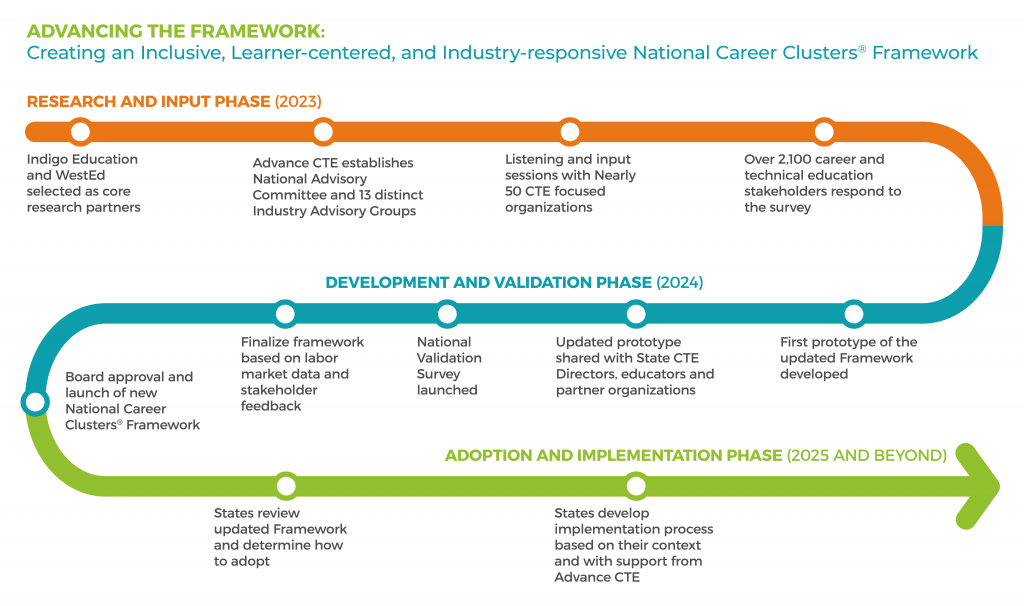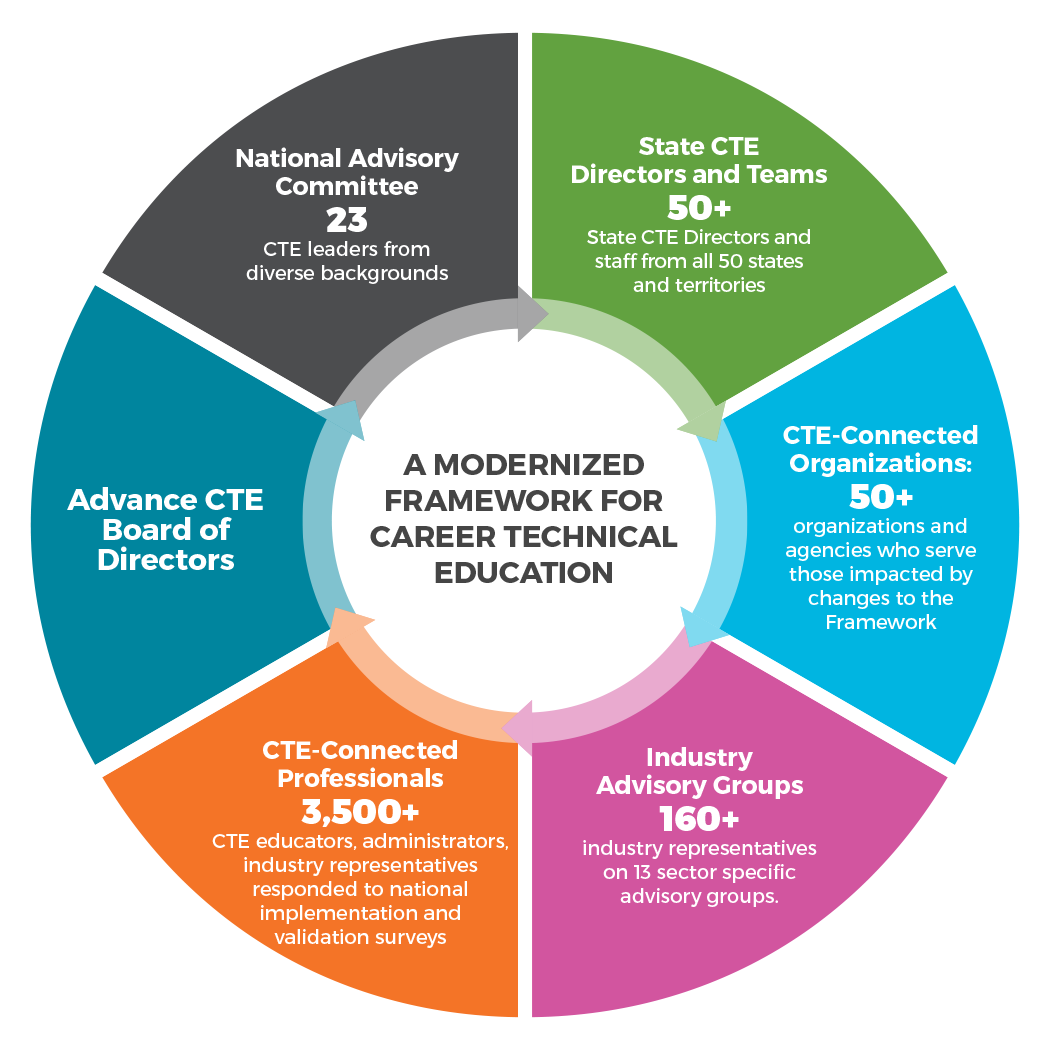Methodology
Home » Career Clusters » Methodology
Methodology and Development Timeline Overview
An abridged overview of the modernization initiative timeline, input structures, as well as data sources and use.
The modernized version of The National Career Clusters® Framework is the result of more than a year and a half of research and input gathering from thousands of industry and Career Technical Education (CTE) professionals across the country. This process kicked off in early 2023 with the selection of research partners Indigo Education and WestED. During spring 2023, Advance CTE and partners established the national input strategy for the modernization effort, including creating the National Advisory Committee (NAC) and 13 Industry Advisory Groups (IAGs). The NAC, composed of 23 diverse CTE leaders, provided strategic guidance and insight into the decision-making process, while the IAGs were composed of more than 160 professionals across 13 industry-focused groups. These groups ensured that the Framework bridged education and workforce needs and represented the diverse needs of learners, educators, and industry.
In addition to the NAC and IAGs, Advance CTE and partners held listening and input sessions with nearly 50 CTE-focused organizations. Each of these engagement points, coupled with quantitative data analysis, informed the development of the Framework itself. A timeline for the development process is shown in Figure 1.
Figure 1: Framework Development Timeline

- Surveys: Several surveys were designed and deployed to support the research process:
 a national implementation survey, designed to elicit input on the types of resources and supports educators need to implement the Framework. This survey targeted seven user groups: local secondary instructors; local postsecondary instructors; local secondary administrators; local postsecondary administrators; state agency staff members, including the State CTE Director; representatives of national CTE organizations, including Career Technical Student Organizations and national educators associations; and representatives of content delivery organizations. It had more than 4,900 respondents.
a national implementation survey, designed to elicit input on the types of resources and supports educators need to implement the Framework. This survey targeted seven user groups: local secondary instructors; local postsecondary instructors; local secondary administrators; local postsecondary administrators; state agency staff members, including the State CTE Director; representatives of national CTE organizations, including Career Technical Student Organizations and national educators associations; and representatives of content delivery organizations. It had more than 4,900 respondents. - a validation survey, designed to garner input from educators, industry, and the general public about a draft of the Framework to inform revisions and refinements. This survey yielded nearly 1,400 responses from individuals in 47 states, the District of Columbia, and the territories.
- educator surveys, designed to understand current methods of supporting learners in discovering career pathways, use of the existing Framework, best practices, and challenges with the existing Framework and resources.
- Interviews: One-on-one interviews with stakeholders and partners were conducted to gather in-depth information about their experiences and outcomes.
- Focus and advisory groups: The Framework development process included input from several standing committees, including the NAC, CTE Educators Advisory Group, and IAGs, during over 40 sessions. Eight additional input sessions were also conducted at various points with State CTE Directors, national CTE organizations, and other CTE leadership. Advance CTE issued a national call for participants in industry, whose purpose was to inform the Framework organization, including identifying Sub-Clusters and providing input on the language used to describe each Career Cluster.
- Quantitative data analysis: Data from industry, association, state, and national sources such as the U.S. Bureau of Labor and Statistics, National Center for Education Statistics, and Lightcast Labor Market Analytics and Economic Data were collected and aggregated for analysis. Indigo Education’s proprietary data set on learner behavioral styles, durable (soft) skills, interests, motivators, and preferences was also employed for analysis.
Figure 2: Data Collection and Use
| Industry Advisory Groups | Labor Market Research | National Stakeholder Input | |
|---|---|---|---|
| Data gathered |
|
|
|
| How data informed the Framework |
|
|
|
In addition to the multi-method approach, the research process was designed with rigorous attention to diverse perspectives and opportunities for iterative feedback loops to ensure continuous improvement throughout the research process. This feedback process resulted in 15 iterations of the Framework, each taking into consideration feedback from multiple audiences on the previous version. A detailed account of each step in the process, including how audience feedback and labor market analysis informed the final Framework, can be found in the full Technical Report.
Career Clusters
Click each Cluster for Cluster definitions and implementation resources.
